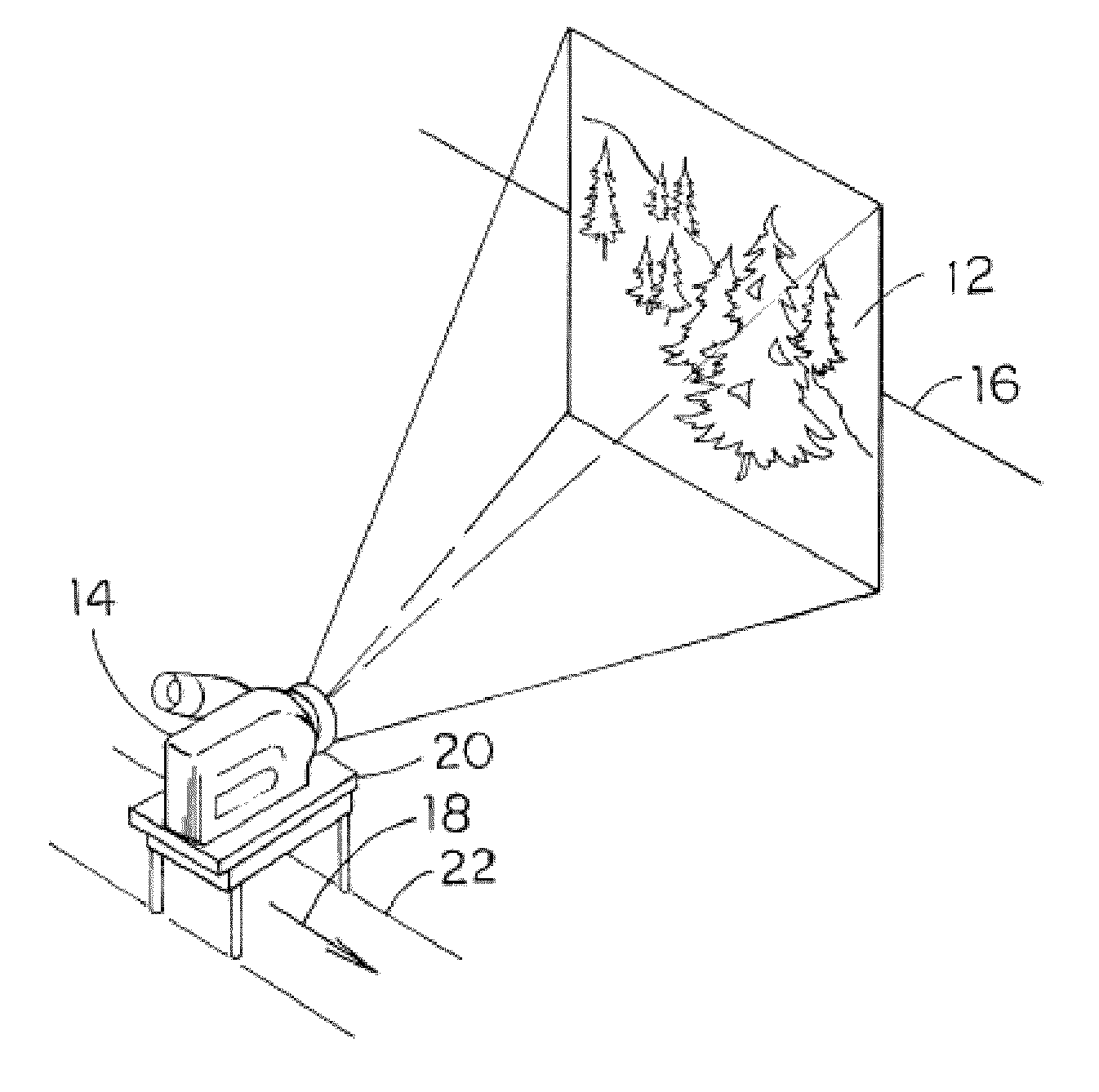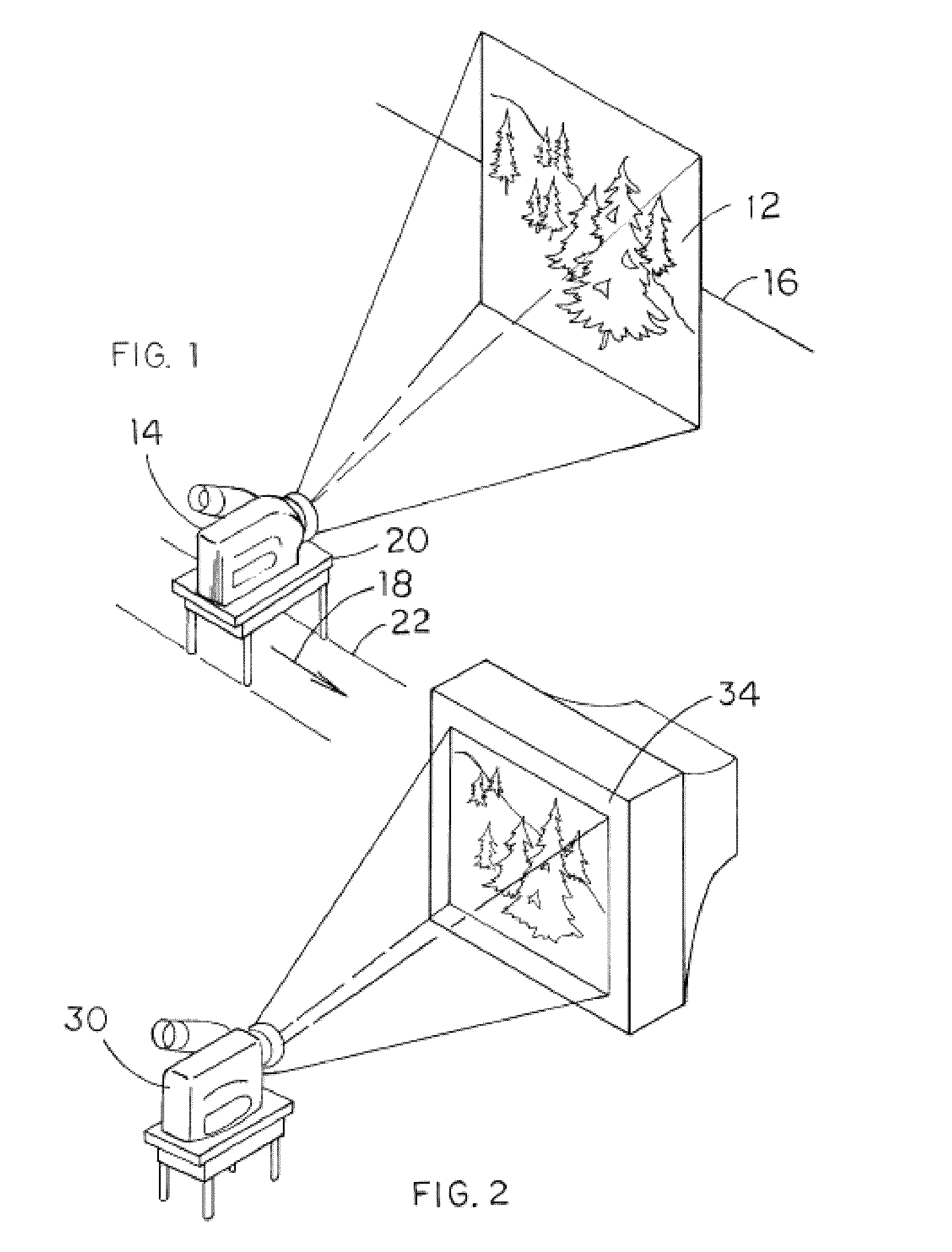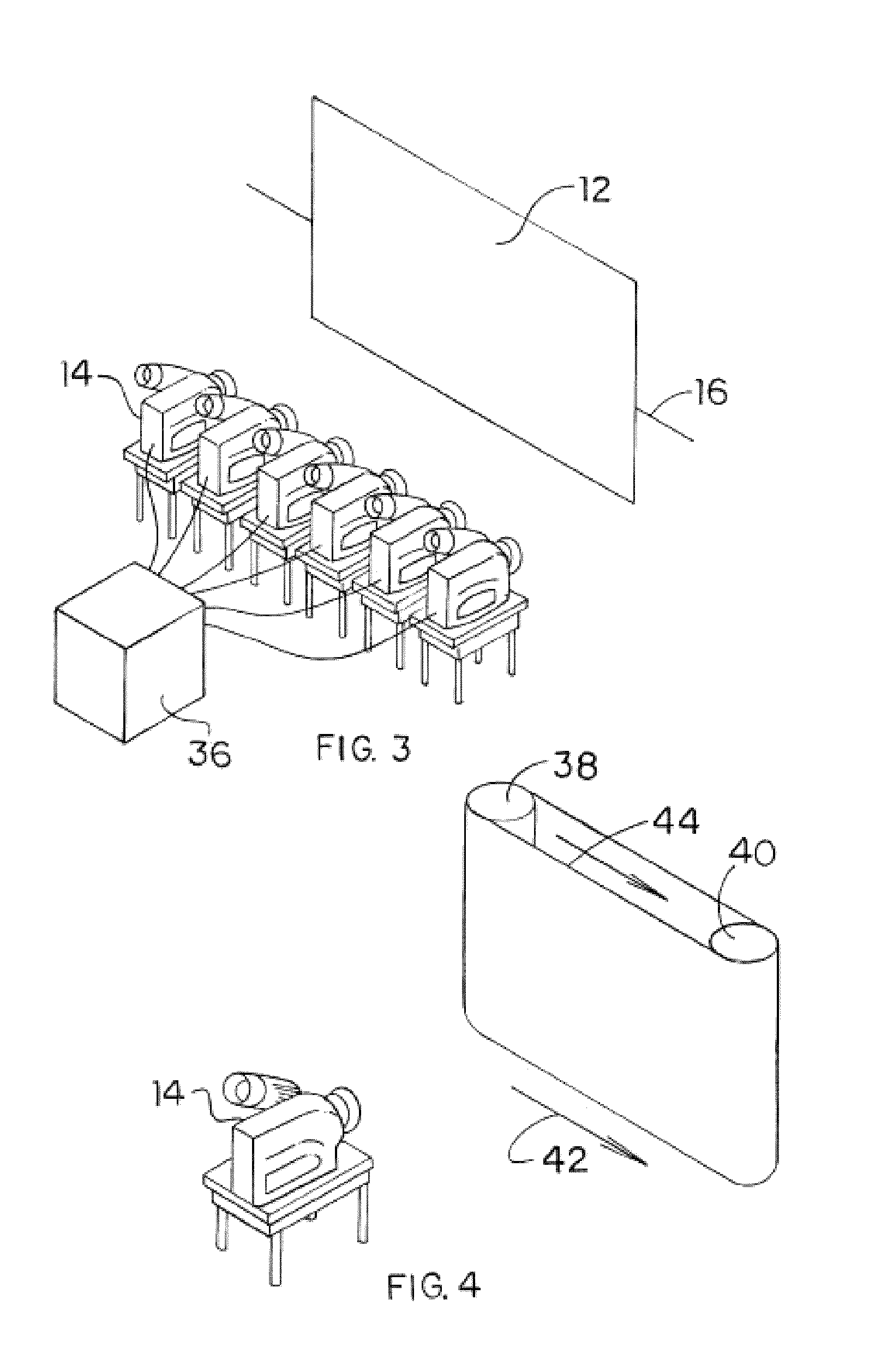Stereo pair and method of making stereo pairs
a stereo pair and stereo technology, applied in the field of stereo pair and method of making stereo pairs, can solve the problems of hindering the commercialization of such systems, disadvantages of holographic systems, and inability to make photographs
- Summary
- Abstract
- Description
- Claims
- Application Information
AI Technical Summary
Benefits of technology
Problems solved by technology
Method used
Image
Examples
example i
[0071]An airplane is traveling at 240 m.p.h. for a time of 30 seconds. The closest object to the film plane is a half mile away. The motion picture camera used, has a normal lens of 30 mm and the lens used has a 200 mm focal length. The motion picture camera is shooting 32 frames per second. The 1:40 rule is being used. The airplane is flying perpendicular to the subject being filmed.
[0072]
(1) Find “S”:S = 240 mi / hr × 5280 ft / S = 38016000 ft / 3600S = 10560 ftmix 30 sec / 3600 sec / hr(2) Find “W”:W = (D × N) / (E × L)W = [(5280W = 79200 ft / W = 9.9 ftft × .5) × 308000mm] / (40 × 200mm)(3) Find “B”:B = (F × T × W) / SB = 32 frames / B = 9504B = .9 orsec × 30 sec ×frames / 10560 ft1 frame9.9 ft / 10560 ft
[0073]This means every other frame will be a stereo pair. 960 frames were shot, so 480 stereo pairs from a 30 second filmstrip.
example ii
[0074]An old film footage, a boat motoring up the Amazon River was shooting a motion picture camera of the villages along the river. The boat and camera were perpendicular to the river's edge while the film footage was being shot. The strip of film wanted to be processed into stereo pairs was 1,500 frames long and contained a village. The village appeared to be around 1,000 feet away from the camera and boat. 1:40 rule is desired and the normal lens for this format is a 30 mm. Camera usually runs 32 frames per second. The film footage covered is approximately 2,000 feet of shoreline.
[0075]
(1) Find “W”:W = (D × N) / W = (1000 ft × 30 mm) / W = 1000 ft / 40W = 25 ft(E × L)(40 × 30 mm)(2) Find “B”:B = (F × T ×B = 32 frames / sec × T × 25 ft / 2000 ftW) / ST = 1500 frames / 32 frames / secT = 1500 / 32 secT = 47 secB = 32 frames / sec × 47 sec × 25 ft / 2000 ftB = 37600 frames / 2000B = 18.8 Frames or 19 frames
Thus, every 19th frame should be a stereo pair. “S” could also be figured by apparent land speed (wha...
example iii
[0076]In reference to FIG. 5 and FIG. 6, stereographic pairs may be produced from a 2-dimensional film strip illustrated in FIG. 5. Film strip 50 is trucked at a constant speed from left to right parallel to the scene. “B” equals 3 frames. The result desired is a normal stereo effect. Chip No. 1 is the first right side Chip No. 1-R. Chip No. 2 is the first left side chip although hypo-stereo No. 2-L and so on. Chip No. 1-R and Chip No. 3-L are still hypo-stereo pairs, but should show more depth in viewing than Chip No. 1-R and 2-L. Chip No. 1-R and 4-L are the desired pair, since “B” equals 3 frames. Any chip closer to this pair will be hypo-stereo and any chip farther apart than this pair will be hyper-stereo. Thus, Chip Nos. 1-R and 5-L are the first hyper-stereo pair. This pair will exaggerate the normal stereo effect. Chip Nos. 1-R and 6-L are also a hypo-stereo pair and will add more exaggeration to the normal pair than a stereo pair consisting of Chip Nos. 1-R and 5-L. In prod...
PUM
 Login to View More
Login to View More Abstract
Description
Claims
Application Information
 Login to View More
Login to View More - R&D
- Intellectual Property
- Life Sciences
- Materials
- Tech Scout
- Unparalleled Data Quality
- Higher Quality Content
- 60% Fewer Hallucinations
Browse by: Latest US Patents, China's latest patents, Technical Efficacy Thesaurus, Application Domain, Technology Topic, Popular Technical Reports.
© 2025 PatSnap. All rights reserved.Legal|Privacy policy|Modern Slavery Act Transparency Statement|Sitemap|About US| Contact US: help@patsnap.com



